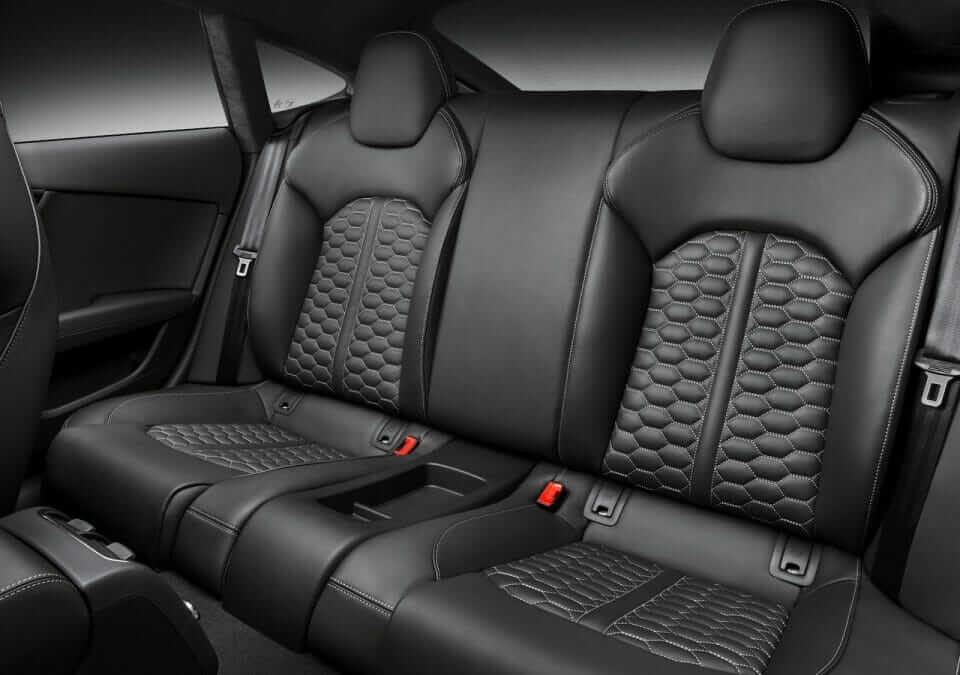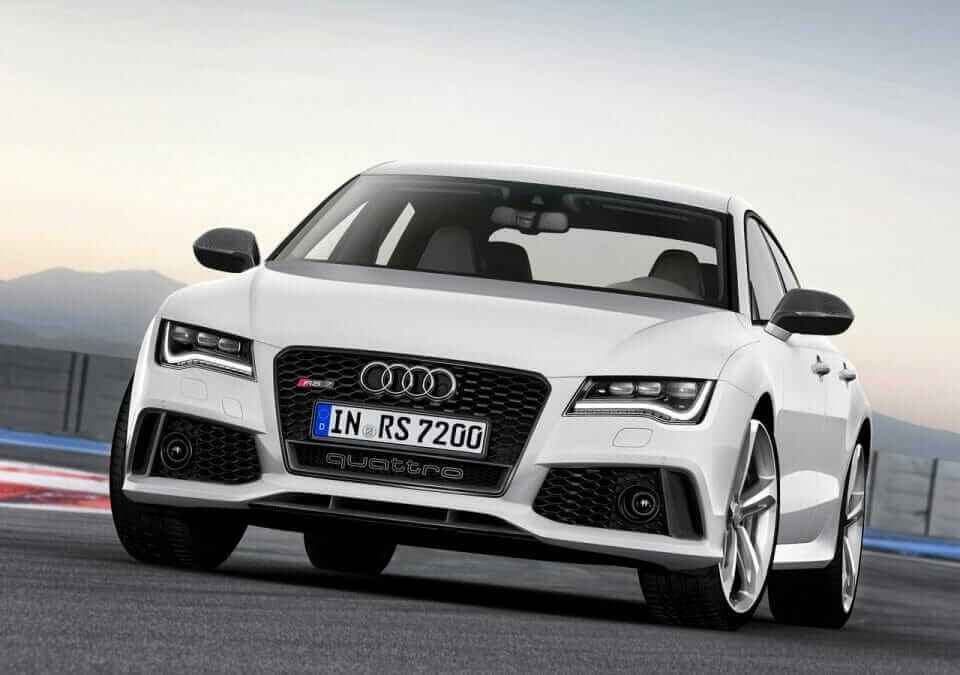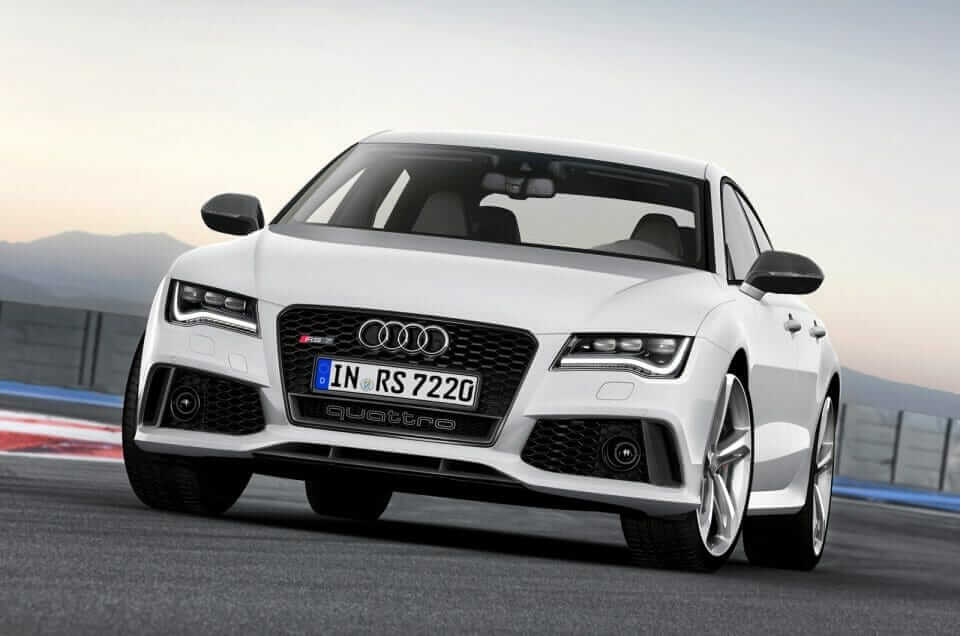
The Audi RS7 Sportback sprints from 0 to 100 km/h (62.14 mph) in just 3.9 seconds. Audi limits the top speed in the standard configuration to 250 km/h (155.34 mph). Top speed with the optional dynamic package is 280 km/h (173.98 mph) and 305 km/h (189.52 mph) with the dynamic package plus.
Yet the new top model of the series consumes on average just 9.8 liters of fuel per 100 km (24.00 US mpg). This top value is due in part to the standard start-stop system and innovative thermal management.
The most innovative efficiency technology in the new Audi RS7 Sportback is the cylinder on demand (COD) system. At low to medium loads and engine speeds, it deactivates cylinders 2, 3, 5 and 8 by closing their valves via electromechanical actuators. The 4.0 TFSI then runs as a four-cylinder engine until the driver accelerates more strongly again. The operating points in the active cylinders are displaced toward higher loads, increasing efficiency.
All of these operations take just a few hundredths of a second and occur so smoothly and quickly that they can hardly be felt or heard. Active engine bearings, another high-end solution from Audi, use out-of-phase counter-oscillations to compensate for the slight vibrations that occur during four-cylinder operation. The COD technology reduces NEDC fuel consumption by roughly five percent, and even greater savings of approximately 10 percent are possible when driving at moderate speeds.
The standard eight-speed tiptronic is specially tuned to the sporty character of the Audi RS7 Sportback. Drivers can choose between the modes D and S or change gears themselves using the shift paddles on the steering wheel or the selector lever, which sports a unique RS design. While the lower gears of the tiptronic are closely spaced for sporty response, eighth gear is tall like an overdrive to reduce fuel consumption.
The Audi RS7 Sportback comes standard with quattro permanent all-wheel drive for its decisive advantage in traction and driving safety compared with its two-wheel-drive competitors. At the heart of the quattro system is a center differential with a high locking rate and a separate oil cooler to regulate its temperature. It distributes the power as needed within a wide range between the front and rear axles. In the standard configuration, 60 percent flows to the rear and 40 percent to the front.
Powerful brakes are located behind the large wheels. The four internally vented discs feature a weight-saving wave design and measure 390 millimeters (15.35 in) in diameter up front. Pins decouple the steel friction rings from the aluminum brake caps. Black painted six-piston calipers – optionally available in red – grip the discs. Audi also offers optional 420 millimeter (16.54 in) carbon fiber ceramic discs with anthracite gray calipers. The electronic stabilization control (ESC) has a Sport mode and can also be deactivated entirely.
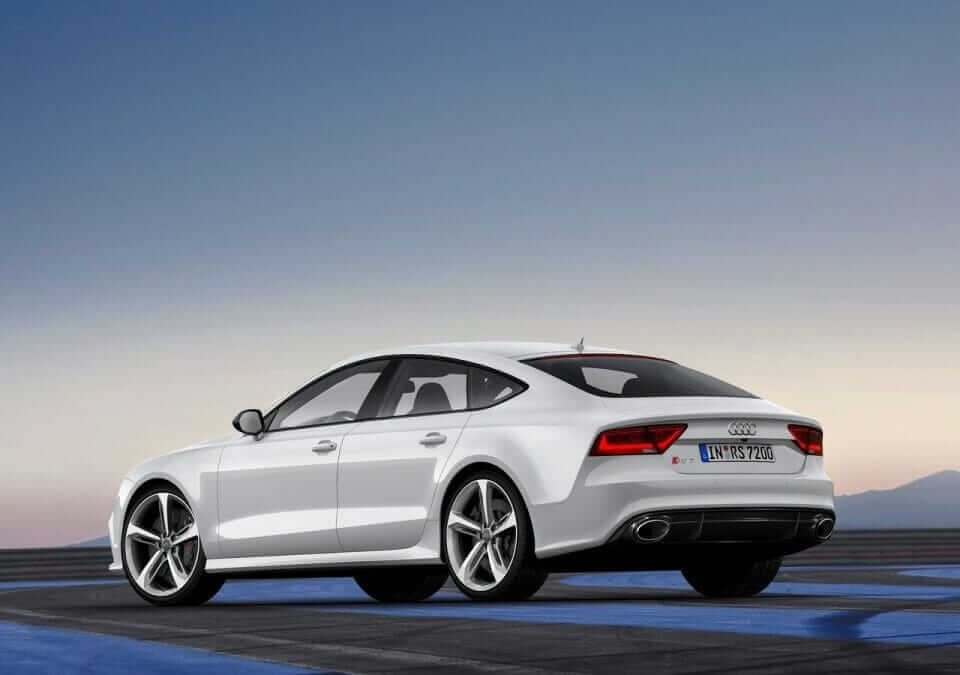
Equipped with the air suspension, which harmonizes perfectly with the dynamic character of a sport coupe, the new Audi RS7 Sportback is sporty, yet still comfortable. The Audi RS7 adaptive air suspension lowers the body by 20 millimeters (0.79 in). Adaptive damping, another of the system’s features, adjusts the suspension’s response to the condition of the road, the driver’s style and the mode selected in the Audi drive select system, with which the driver can alter the function of key components in multiple steps.
Audi offers the taut sport suspension plus with dynamic ride control (DRC) as an alternative to the air suspension. It uses steel springs and three-stage adjustable dampers that are connected to one another via diagonal oil lines and a central valve. Another option, which can also be integrated into Audi drive select, is the dynamic steering with its steplessly variable steering boost and ratio. As with the standard electromechanical steering, its characteristics are specially tailored for the Audi RS7 Sportback.
The body of the Audi RS7 Sportback includes up to 20 percent aluminum and includes many parts of high-strength and ultra high-strength steels. Its high rigidity is the foundation for the precise handling, excellent workmanship and quiet cabin free of intrusive noise.
The Audi RS7 Sportback is available in a choice of ten exterior colors, including the new shade Nardo gray and the exclusive finish Daytona gray, matt effect. Two styling packages – matt aluminum and carbon – further customize the appearance. With these, the front center air inlet also sports a quattro badge. With the carbon styling package, the front splitter and the diffuser are somewhat more boldly shaped. Other options include the exterior mirrors with exposed carbon housings and the all-LED headlights, whose designer trims are tinted for a unique look.
Colors and materials provide for further differentiation. The footrest, pedals and soft keys in the standard MMI navigation plus terminal shine in an aluminum-look finish. The decorative trim below the retractable monitor sports a piano finish.
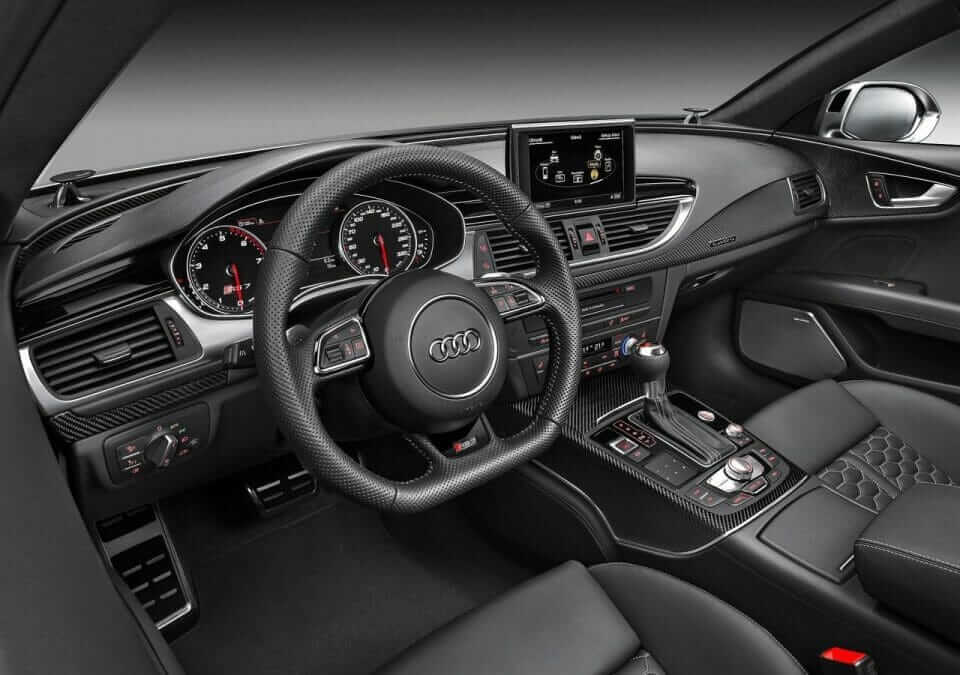
Carbon inlays are standard, with four additional materials available as options. The headlining comes standard in black cloth, with options for lunar silver or black Alcantara. Of course, the Audi RS7 Sportback can also be personalized using the Audi exclusive program.
RS sport seats with pronounced side bolsters, integrated head restraints and RS7 logos are standard. They are covered in a combination of black Alcantara and leather, and the center sections feature diamond quilting. The seats can also be covered alternatively in high-grade, honeycomb-quilted Valcona leather in either black or lunar silver. Audi offers optional power-adjustable comfort seats with memory function. The two rear seats are powerfully contoured. Luggage capacity ranges from 535 to 1,390 liters (18.89 to 49.09 cu ft) depending on the position of the rear seat backs.
The Audi RS7 Sportback comes with a generous list of standard equipment, including xenon plus headlights, a tire pressure monitoring system, the parking system plus, three-zone automatic air conditioning, cruise control and the Audi sound system in addition to features mentioned previously. High-end options include a head-up display, a comfort package, the dynamic package and the dynamic package plus.
The Bluetooth online car phone is an ideal complement to the standard MMI navigation plus. Its UMTS module delivers the tailored Audi connect services to the on-board monitor, and a WLAN hotspot connects the passengers’ mobile devices. Topping the range of audio modules is the Advanced Sound System from Bang & Olufsen.
The Audi RS7 Sportback also leads the pack when it comes to driver assistance systems. One of these is the adaptive cruise control with stop & go function including Audi pre sense front. This keeps the powerful coupe at the proper distance from the car ahead and in many situations can help to avoid accidents or mitigate their consequences.
Audi active lane assist helps the driver to keep the Audi RS7 Sportback on course. The park assist handles the steering when parking. The night vision assistant with highlighting of detected persons reduces the stress of driving in the dark. Audi side assist and the speed limit display round out the list.
